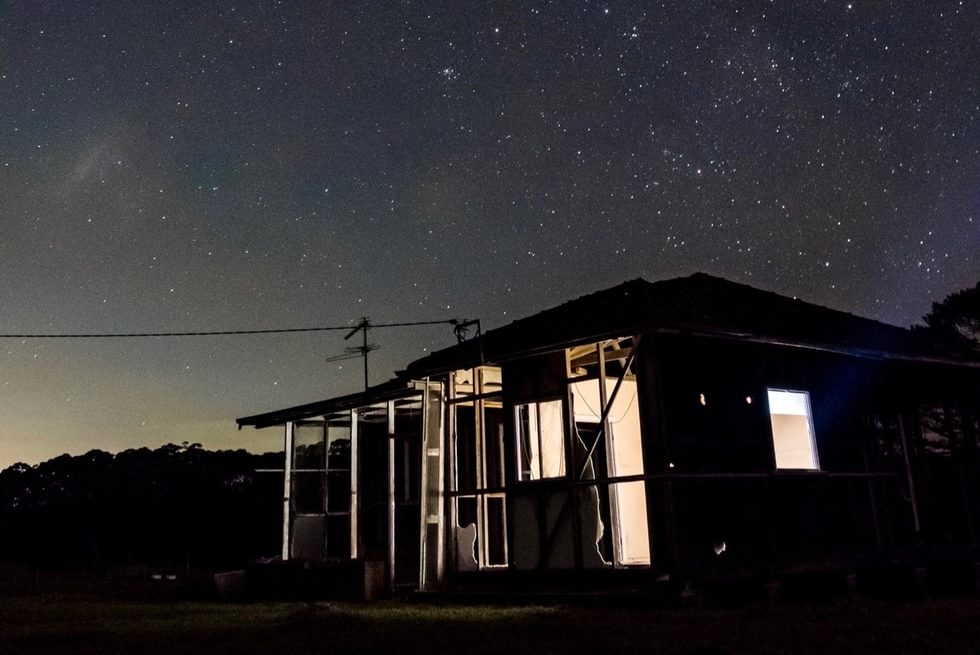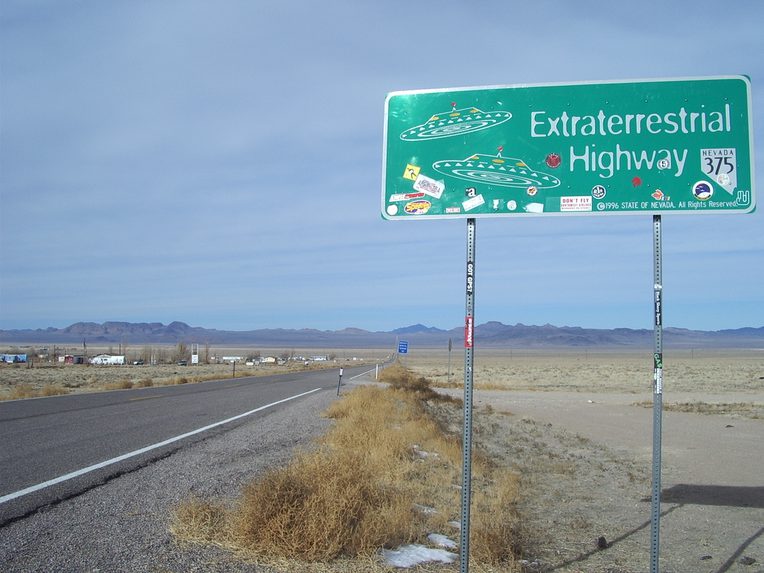A Glimpse of the Unseen
From the Series: Bateson Book Forum: The Resonance of Unseen Things
From the Series: Bateson Book Forum: The Resonance of Unseen Things

I was given the opportunity to respond to the Bateson Prize book for the second year. In last year’s winner, Anna Lowenhaupt Tsing’s The Mushroom at the End of The World, there was an intense sense of materiality that, although difficult to perceive at the beginning, took shape in the hands of the author as she unfolded a global ecology of trade and natural resource management. It took shape, too, in the hands of mushroom pickers, whose knack for the task made the encounter with this valued matsutake species possible. This sense of a reward in the hands of a story’s protagonists is absent in Susan Lepselter’s The Resonance of Unseen Things, which charts a passage through the vast landscapes of rural Nevada in search of an encounter with the different communities that have formed around the belief in UFOs. Here, the object that has activated the research endeavor is always out of the frame. The book is not, then, about the “unseen things,” but rather about their effect in transforming the lives of entire communities in the rural United States.
The Resonance of Unseen Things describes the time that Lepselter spent in one of the communities that are strongly connected to UFO culture in Nevada, a place where the topic of conversation is always fleeting, speculative, and abstract. The book is built around a series of accounts of abduction and other kinds of encounter with seemingly extraterrestrial presences. Lepselter holds the structure of these accounts up against other cases of abduction and captivity, most notably nineteenth-century tales of captivity of white women by indigenous groups in the United States. Rebecca Solnit (2005), who has explored some of these tales herself in A Field Guide to Getting Lost, describes the transformation process that captives undergo as they begin to accept and even assimilate to a new culture. They transit from being captive to being part of the community, and this sentiment resonates with the way that UFO experiencer communities take shape. But as their abduction or captivity experience resonates in the liminal space between dreaming and being awake, it is in the formation of these communities that the transformation process is crystallized.

Lepselter’s narrative is intertwined throughout with a series of dialogues with residents of Rachel and other places in Nevada. These exchanges are separated from the main narrative in groups of loose sentences that almost strike the reader as verse, as if they were part of a larger and more stable body of vernacular knowledge, but also as if to underscore the importance of keeping those ideas on a different level than the scholarly elaborations Lepselter uses to contextualize, analyze, and present her experience. By compiling stories and resisting, at times, their scientific interpretation, Lepselter achieves a remarkable account of the emergence of experiencer communities, thus acknowledging the emergence of communal epistemologies in the construction of social spaces and identities. Here, Lepselter is by no means trying to discipline language. Rather, she explains its social usage, by employing categories and structures already present in the vernacular and continuing to develop them in her prose. The uncanny, for instance, is first presented as a guiding concept, but then later becomes simply the weird, that strangeness that pervades the sense of surveillance and lack of control that characterizes the abduction stories she encounters.
The reader is thereby invaded with a sense of what Lepselter calls apophenia: at every turn, a small, sensitive detail opens up an entire universe of interpretation. A fellow traveler mentions the state-issued driver’s license as a technology for surveillance and control, and then the narrative takes us on to Biblical parallels and recorded coincidences of the story put forward. Then, it moves to conspiracy theories that many academic readers might have otherwise discarded. Suddenly, these minimal gestures, which in Lepselter’s own words are precisely what produces interest and maybe plausibility, become a network of ideas and events that seem to be inextricably connected. Instead of a series of accounts of abduction experiencers and their lives, the book charts a smooth progression toward that very feeling of weirdness experienced by the people from Nevada. Where the earlier stories were about lights and hums tangentially touching the lives of experiencers, the last chapters take us to the darker spaces of UFO culture and creatures that pass for humans.
The Resonance of Unseen Things succeeds in giving voice to a community that portrays one of the most critical challenges of our time: the struggle to respond to cultures that have shaped themselves on the borders of an imagined mainstream, governed by rationality, progress, and economy. These are cultures that have no regard for reproducing or celebrating systems from which they have been largely excluded. Lepselter is extremely careful in the way that she constructs the book: adopting the voice of an “experiencer” of this community, providing scientific context to her appreciations of the social ecologies of the Southwest, but then moving on to allow the community’s voices to emerge without confronting the rigid constraints of disciplinary interpretation. The author thus evokes an entire world of desire and imagination that shapes the lives of many in the rural Southwest, one that is built on the cycling and recycling of what the narrator of a William Gibson story calls “semiotic ghosts,” shaped somewhere between experience, exchange, and the overwhelming influx of mass media, all sifted through the creative filter of memory and its peculiarities.
There is an enamel pin I wear on my jacket, which bears a UFO and the inscription “I believe.” I purchased it at a street fair in Chicago a few years ago. A colleague commented on it recently, asking if I had worn it in honor of a talk we were attending on the history of truth. The gesture was not so calculated, but it did and does register my sympathy with the politics of resistance that experiencers enact. By rejecting prescriptive explanations, by relativizing scientific and institutional knowledge as tainted by conspiracy and, as a result, by creating their own language, knowledge base, and sites of encounter, experiencers are breaking away from the histories of negligence and injustice that unfold through the pages of Lepselter’s book. The book gives us a glimpse of another kind of unseen, represented by these communities that silently (and willingly) live on the fringes of the urban, hyperconnected, rationally driven cultural spaces that many of us occupy.
Solnit, Rebecca. 2005. A Field Guide to Getting Lost. New York: Viking.